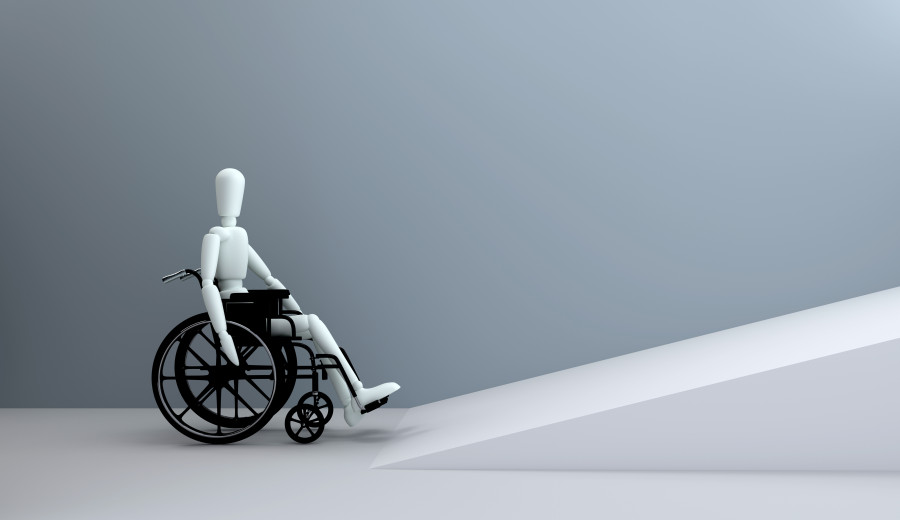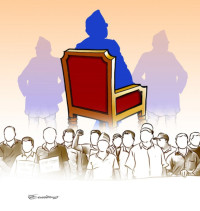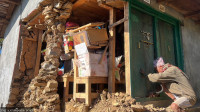Opinion
Disability-inclusive disaster response
The country should promote the inclusion of people with disabilities in disaster management.
Sudarshan Neupane
Nepal is one of the most disaster-prone countries in the world due to its topography and climatic condition. Classified as a global ‘hotspot’, studies show that Nepal is vulnerable to earthquakes, landslides, floods, wildfires, drought, avalanches and storms. The government of Nepal has developed measures to identify potential hazards and the risk elements with an emphasis on building the capacity of local bodies and communities to respond to them. Nepal has developed a comprehensive legal, planning and operational framework including the publication of disaster risk reduction guidelines and the establishment of disaster risk management committees from the national level down to local communities in collaboration with various stakeholders. The current focus of a majority of disaster risk reduction activities is on preparedness and response to earthquakes, floods and landslides, and less on prevention of disability and/or inclusion of people with disabilities in disaster cycle management.
When a disaster occurs, it threatens the wellbeing of all people. However, some vulnerable groups like people with disabilities, the elderly, children and pregnant women get disproportionately affected. According to the World Bank, there are over one billion people with disabilities in the world, more than two-thirds of whom are from developing countries like Nepal. Nonetheless, there is a big gap in how to address the challenges and barriers faced by people with disabilities in disasters. Learning from the massive 2015 earthquakes and recent disasters in Nepal, it is high time for us to ensure inclusion of people with disabilities and other vulnerable groups, not only in times of disaster response but also in the preparedness phase.
Trapped in a vicious cycle
Studies have shown that disabled persons have poor access to health, education, livelihood and other services and, therefore, are trapped in a vicious cycle of poverty. In most cases, poorly planned disaster response and recovery efforts not only exacerbate the disparity, but it also leaves people with disabilities to cope before, during and after the emergency. Recent disaster response and preparedness initiatives lacked the required sensitivity to age, gender and disability, though certainly a big emphasis has been laid on disability thanks to the Sustainable Development Goals and other development agendas. People with disabilities are rarely part of the mass public awareness and mock drills, and people having hearing or visual impairments and other psycho-social disabilities are left behind in this process as access to information is very limited to them in early warning systems.
These actions are most preferred to promote inclusion of people with disabilities in disaster management. First, understating the barriers for the full participation of people with disabilities and working towards removing them is key. People with disabilities and their families face several kinds of discrimination and physical barriers (lack of accessible venues, sanitation facilities and transportation), inaccessible information and communication (no sign language interpreter, Braille or audio materials for people with visual impairments) and other types of attitudinal barriers to fully identify disabled persons as part of human diversity and acknowledge their abilities. It is, therefore, very important for all government and non-governmental actors (including the private sector) to understand these barriers and ensure accessibility to promote the equal and active participation of all people.
Data on disability is limited, let alone data of people with disabilities relating to disaster. Increasingly, studies have shown that having solid data is necessary to design and implement disaster management activities that include people with disabilities and their needs. Many a time, identification has been a big problem. Thanks to the Washington Group on Disability Statistics, it has now become easier to access information about the difficulties faced by people which can be a very useful tool to prevent disabling consequences in the future.
Second, it is high time for all development actors to better engage with disabled people’s organisations and people with disabilities in all disaster risk management phases. It is noteworthy to mention that disabled people’s organisations and their federations have made a great contribution in drafting and implementing inclusive policies and frameworks. One should understand that people with disabilities and disabled people’s organisations have rich experience, knowledge and expertise on how to make disaster risk management activities friendlier to them and their needs. It is strongly advisable to include people with disabilities in the design, implementation and monitoring of activities. In order to promote mainstreamed inclusion in the overall disaster risk management sector, there is a need for capacity building of humanitarian and development workers and local government representatives, and first responders to be trained in disability inclusion issues for which partnership with expert organisations and disabled people’s organisations definitely helps.
Awareness raising
Third, awareness raising about the vulnerabilities of people with disabilities in different phases of disaster is central. Most disaster response programmes fail to ensure the wellbeing of people with disabilities in preparedness and disaster response. The government of Nepal and its development partners should prioritise capacity enhancement programmes to sensitise officials and development actors to be better educated to understand the additional risks/barriers faced by people with disabilities in times of disaster. Oftentimes, it can be as simple as including children with disabilities in school-based mock drills. This boosts the confidence of the disabled child and creates an atmosphere of cooperation in times of disaster.
Lastly, rebuilding better and safer has become a catchphrase in the recovery context of Nepal. However, our recovery efforts need to ensure that all infrastructure, both new and rebuilt, should be accessible. There is a need for actors working in the disaster sector to consolidate learning and good practices on inclusive practices and approaches to promote disability inclusion in different types of disaster contexts.
- Neupane is associated with Handicap International-Humanity & Inclusion (Bangladesh).




 15.12°C Kathmandu
15.12°C Kathmandu










